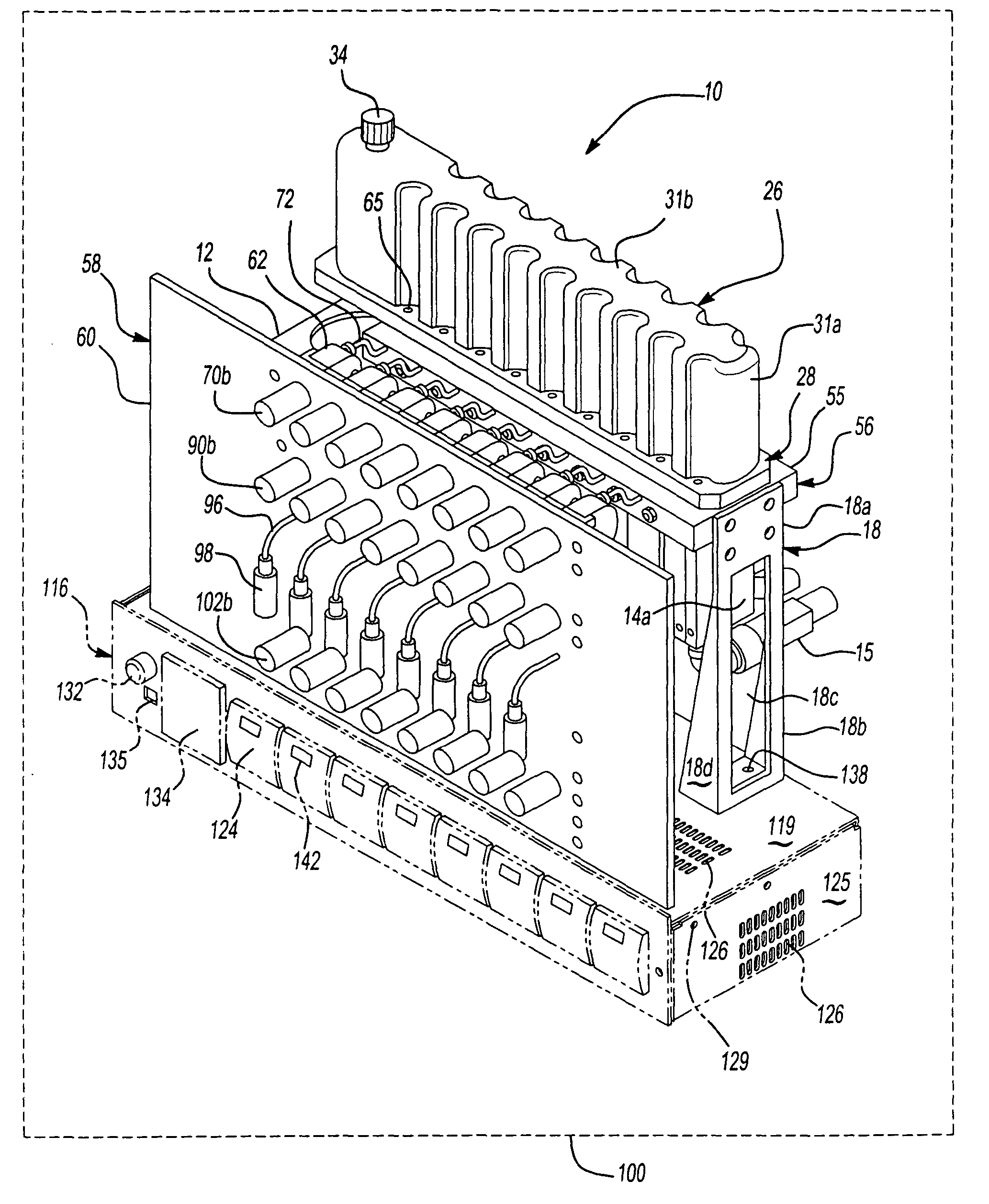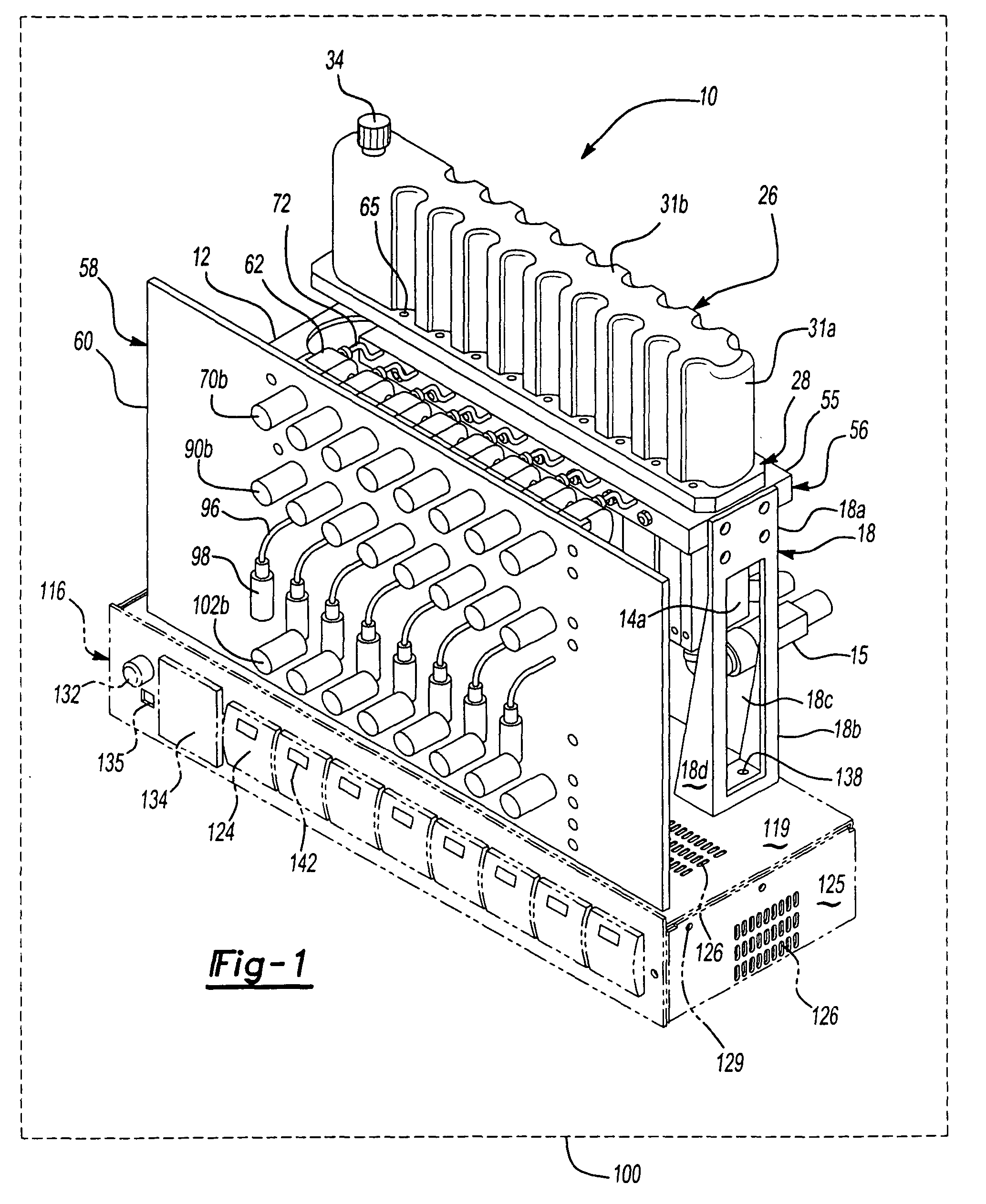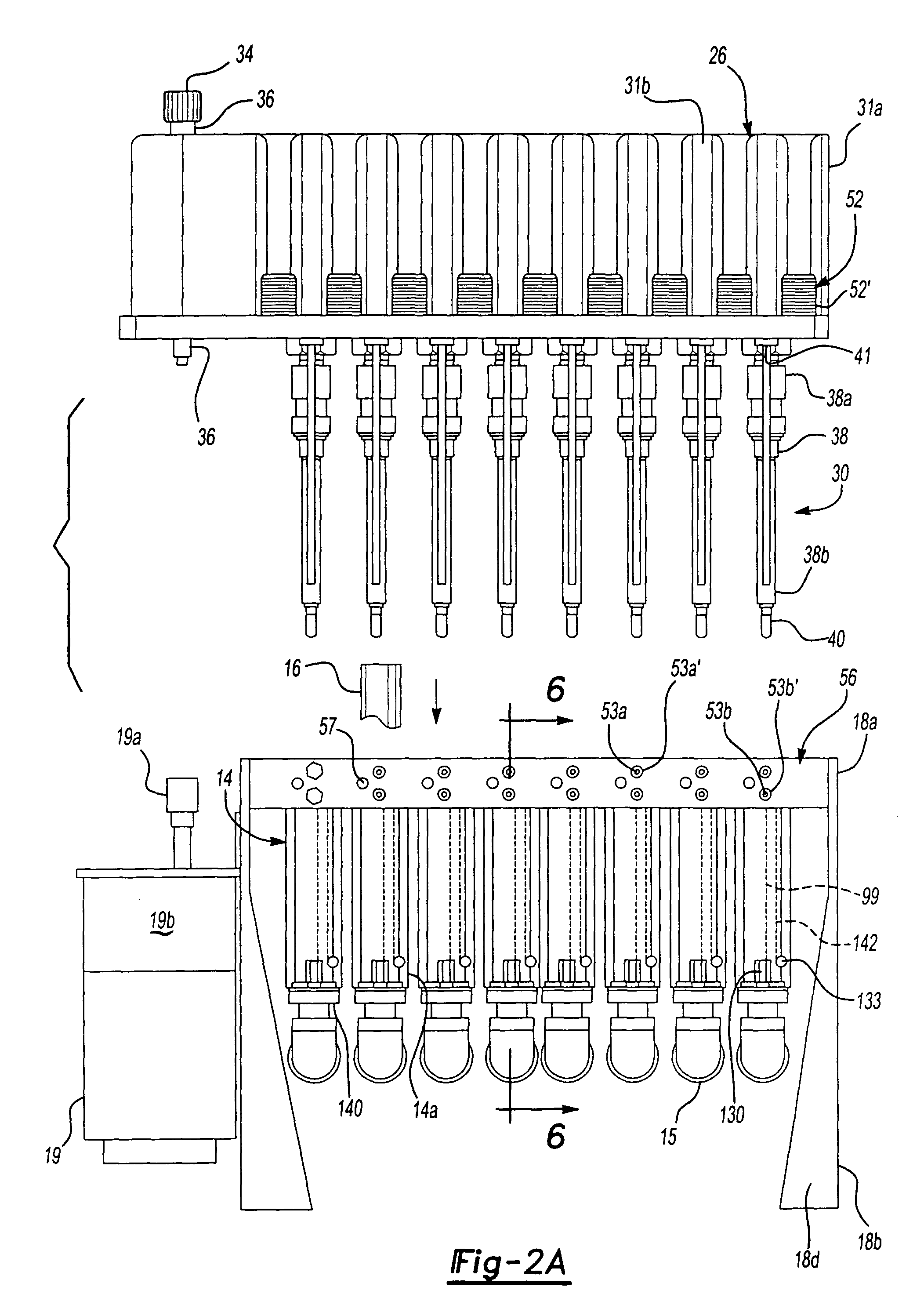Parallel reactor for sampling and conducting in situ flow-through reactions and a method of using same
a parallel reactor and flow-through technology, applied in the field of apparatus and method for carrying out and in situ monitoring of the progress and properties of multiple parallel reactions, can solve the problems of slow and arduous chemical synthesis process, and achieve the effect of reducing the pressure in the reaction chamber
- Summary
- Abstract
- Description
- Claims
- Application Information
AI Technical Summary
Benefits of technology
Problems solved by technology
Method used
Image
Examples
example 1
Liquid Phase Hydrogenation Reaction (High Pressure Sampling)
[0191]The parallel reactor 10 can be used for chemical reactions such as hydrogenation, oxidation, carbonylization and polymerization under pressure. The chemicals to be reacted can be in the form of a liquid, solid or slurry. The following example illustrates a typical use of the parallel reactor 10.
[0192]FIG. 1 illustrates the configuration of the parallel reactor system 10 that could be used for this example 1, with the following exceptions: the reactor system 10 could be assembled using the static pressure manifold bar 700 and the blank injection manifold 54.
[0193]To set up the experiment, clean each component comprising the reactor system 10 with tetrahydrofuran (THF) and replace O-ring seals and stirring blades 40. Attach the static pressure manifold 700 to the reactor block such that the flow path 21a is coupled to a common pressure source—Hydrogen gas. The remaining flow paths 20a, 20b and 21b are plugged. The stir ...
example 2
Method of Using Parallel Reactor 10
[0203]This illustrative example describes how the parallel reactor 10 can be used to screen, characterize or evaluate various material and thermal properties, including, but not limited to, molecular weight, specific gravity, elasticity, dielectric constant, conductivity or calorimetric data.
Reactor Block Assembly Set-up
[0204]FIG. 1 illustrates an embodiment of a parallel reactor assembly that can be used to perform the following screening of various materials. The parallel reactor can include eight reactor wells, each well supporting a removable vessel that prevents direct contact of the reaction mixture with the well 14.
[0205]In this illustrative experiment, the reactor assembly also includes a stir top assembly supporting a stirring blade assembly for mixing the reaction mixtures, a pair of dip tubes and a blank injection manifold. The reactor assembly also includes a heater and motor control box assembly for controlling the temperature of each ...
PUM
| Property | Measurement | Unit |
|---|---|---|
| Pressure | aaaaa | aaaaa |
| Area | aaaaa | aaaaa |
| Temperature | aaaaa | aaaaa |
Abstract
Description
Claims
Application Information
 Login to View More
Login to View More - R&D
- Intellectual Property
- Life Sciences
- Materials
- Tech Scout
- Unparalleled Data Quality
- Higher Quality Content
- 60% Fewer Hallucinations
Browse by: Latest US Patents, China's latest patents, Technical Efficacy Thesaurus, Application Domain, Technology Topic, Popular Technical Reports.
© 2025 PatSnap. All rights reserved.Legal|Privacy policy|Modern Slavery Act Transparency Statement|Sitemap|About US| Contact US: help@patsnap.com



